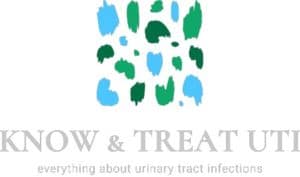Oatmeal possesses great anti-inflammatory, antioxidant and skin-soothing properties that can be very useful for a lot of skin conditions, but here people are asking for oatmeal baths and whether if they could be used as a remedy for UTI or whether if they can offer any kind of help in that matter.
Oatmeal baths do not have antibacterial qualities, So they won’t be able to kill any kind of UTI-causing pathogens as they try to invade your urinary tract. They will only be able to provide mild relief from UTI’s discomfort in the best of cases.
However, there are some cases in which oatmeal baths can be more useful for people with UTI. Stay with us in this article to find out how and for more information regarding oatmeal baths and their use for urinary tract infections (UTI).
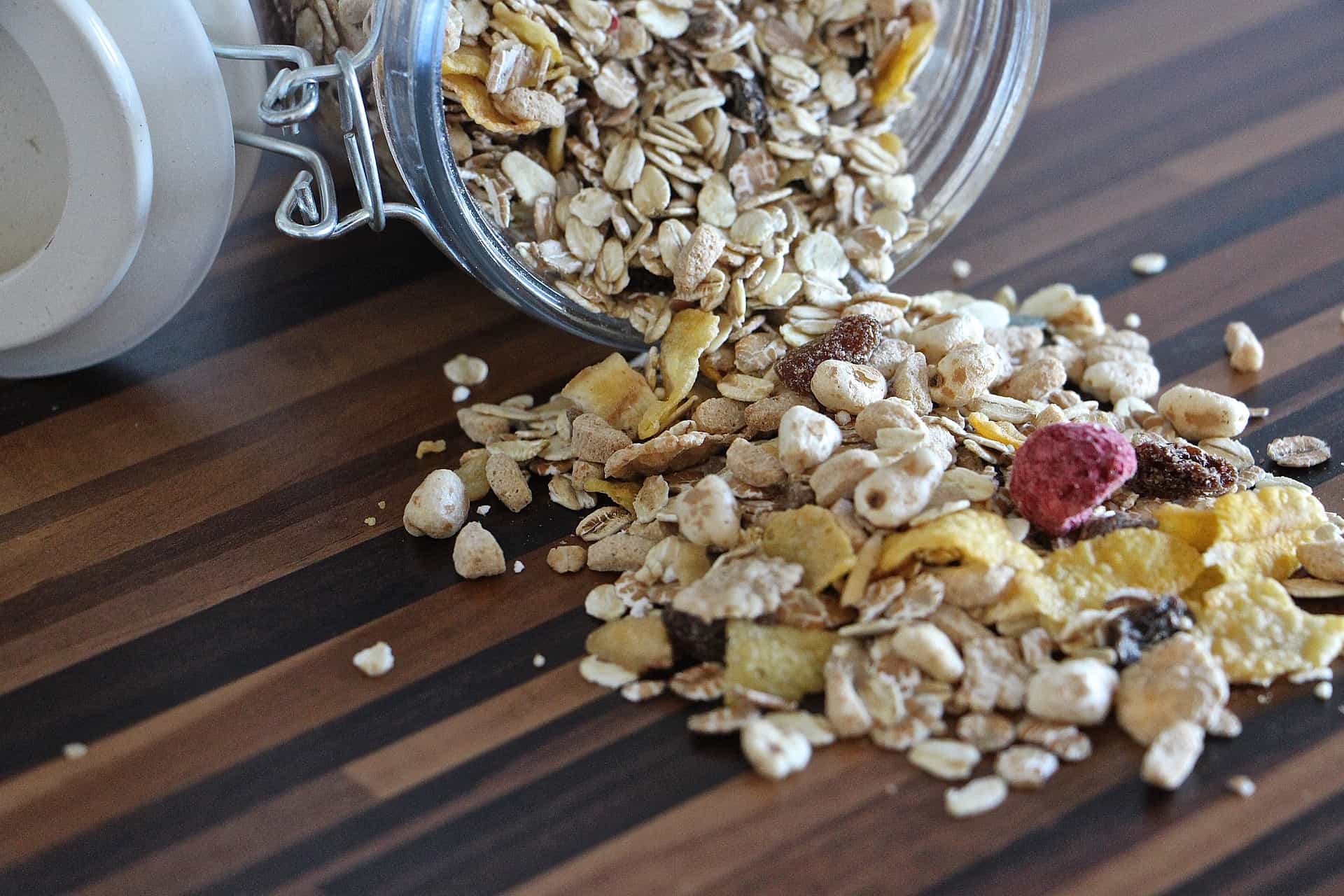
Is soaking in an oatmeal bath good for UTI?
Urinary tract infection-causing pathogens do use the area of skin between the rectum and the opening of the urethra, which is called the perineal region, as a medium to travel to the urinary tract and cause a urinary tract infection (UTI).
So, naturally one would assume that if a topical preparation or bath can prevent bacteria from traveling through that already vulnerable area of the skin and using it as a base to cause infections like the UTI, then that would be of immense help.
However, unfortunately, that is not the case with oatmeal baths, especially not when using them as a remedy for UTI because oatmeal and oatmeal baths do not have antibacterial qualities that can prevent bacteria from exploiting that region of the skin around the genitalia.
Moreover, in the time of an ongoing UTI, we need something to attack the bacteria directly and halt their growth as fast and as strongly as possible because if we give the bacteria time, they will be able to spread and replicate even more and cause more trouble.
Oatmeal baths do have amazing anti-inflammatory, antioxidant, skin-soothing and even cleansing properties, but these qualities first of all take a little bit long to have a measurable effect on the skin.
Second of all, if there was an already existing UTI, you need antibacterial action to directly kill the bacteria right away and prevent them from further crossing that area between the rectum and the urethra and exacerbating UTI.
Antioxidant and anti-inflammatory properties won’t be able to offer much help in that case.
Third of all, oatmeal baths and oatmeal, in general, do have immunomodulating effects (which are related to the anti-inflammatory effects) on the skin, which means that they could enhance the skin cell’s immunity and ability to ward off infections and defend themselves.
However, this is an indirect and somewhat weak effect, which needs time and a healthy skin and body to build up to something significant in which the skin becomes more resistant to bacterial infections, colonization or invasion.
The most that UTI patients would be able to get from soaking in an oatmeal bath is some soothing and mild relief from UTIs-discomfort in the best case.
In the worst case, soaking in an oatmeal bath might distract UTI patients from getting real treatment and waste important time in which UTI patients should get professional medical treatment.
It would be better for UTI patients to use other kinds of baths to soak in during a UTI episode like vinegar baths because vinegar does have strong antibacterial properties that can impede bacterial growth or even stop it if used in a correct way. See our vinegar bath for UTI article.
Can oatmeal baths be used in the prevention of UTI?
Oatmeal baths can help in the prevention of UTI for people who do not currently have a UTI but are afraid that they might acquire one at some point in the future.
UTIs sometimes can become a recurring theme for some people, especially young and post-menopausal women.
So these kinds of people who feel that they are vulnerable to UTIs might benefit from soaking in an oatmeal bath because of its great anti-inflammatory, antioxidant, anti-irritation, soothing and skin-protecting properties.
As we said before, the area of skin between the opening of the urethra and the rectum (the perineum) is an infection-prone one, and in the long run, soaking in a bath that contains colloidal oatmeal can repair some damaged skin cells in that area.
It also can enhance the immune defenses there with its immunomodulating effects and by improving the microbiota (good bacteria) population that lives on the skin in general and in that sensitive area as well.
In addition, the antioxidant and anti-inflammatory properties of oatmeal baths are going to prevent or at least mitigate any further damage caused to the skin by external factors like infections, UV light radiation, chemicals, dryness and so on.
All of these beneficial properties of colloidal oatmeal baths can protect that area of the skin and the skin in general from damage and strengthen its defenses against any lurking infection like UTI.
However, these properties are indirect, and they take time until they can have a significant effect as I said earlier.
Meaning that oatmeal cannot kill the bacteria directly, but it to some degree can strengthen our skin barrier or our skin’s defense mechanisms against different kinds of bacteria and prevent infections that can originate from the skin like the UTI.
That’s why it is not good to use colloidal oatmeal baths or oatmeal baths at the time of having an actual UTI, but it’s a good idea to use them when the skin is healthy as a preventative measure.
How do oatmeal baths work for UTI prevention?
We previously said that oatmeal baths can offer some help in terms of preventing UTI and now we are going to tell you how exactly they are going to do that.
One: Oxidation damages the skin cells, and damaged skin cells are more vulnerable to pathogen attacks.
So, if more skin cells in the perineal region between the urethra and the rectum become damaged due to oxidation, more UTI-causing pathogens will have the opportunity to either settle in that region and exploit the damaged cells or to travel through that region to the urethra where they can cause a urinary tract infection (UTI).
The most common scenario is that they will use that Region and the damaged skin cells as a feeding ground and as a base to launch their attacks at the urethra and then the urinary tract.
So an oatmeal bath with its antioxidant properties can prevent damage from occurring to those skin cells in the perennial region and in the skin in general, and then those lively and renewed skin cells will not become so vulnerable to pathogen attacks anymore. See this study.
Two: because of the presence of starch and Beta-glucan (a kind of soluble fiber found only in oatmeal), oatmeal baths can rehydrate the skin and nourish it better than almost every other preparation.
The starch and Beta-glucan molecules in colloidal oatmeal can hold water inside the layers of the skin for a long time, and that can help the skin stay rehydrated for a very long time and then it will prevent the skin from returning to a dehydrated state shortly after the bath.
By the way, colloidal oatmeal is the main constituent in all kinds of commercial oatmeal bath products and of course, in the oatmeal baths you make at home.
This should go without saying that a hydrated skin is more immune to infections and UTI-causing pathogens, like the E. coli bacteria for example.
Three: oatmeal baths or colloidal oatmeal baths have anti-inflammatory properties, and these properties are very important for preventing different kinds of skin dermatological issues.
These properties can also be helpful in terms of preventing UTIs because the more inflammation there is in the skin the less it would be immune against bacterial colonization and pathogenesis.
Oatmeal baths with their anti-inflammatory properties can prevent the action of substances that can promote inflammation on the skin (pro-inflammatory mediators) and that can enhance the Skin’s immunity against infections like UTI. See this study.
Four: Another benefit of oatmeal baths for UTI prevention is their great anti-etching, anti-irritation and skin-soothing properties, and these qualities are all related to the aforementioned anti-inflammatory and anti-oxidant and moisturizing properties of oatmeal.
Five: In addition, an important quality of oatmeal baths is that they work like soap because they have the ability to clean the skin off of dust molecules and dirt and things like that.
So they do not only rehydrate and soothe the skin but they also clean it at the same time and that is not bad for UTI prevention.
Six: One of the mechanisms in which colloidal oatmeal baths and topical preparations can help in the treatment of a topic dermatitis is through their positive effect on the skin microbiome.
In other words, oatmeal baths can improve the population of the beneficial bacteria found on our skin.
That kind of bacteria plays an important role in preventing various kinds of skin dermatological issues and its beneficial effects are not only exclusive to that.
So long as they are there on the skin and in good condition, the skin microbiome can prevent any pathogenic organisms, like the UTI-causing bacteria for example, from traveling from the anus to the urethra and causing a UTI.
Oatmeal baths do not only increase the number of beneficial bacteria found on our skin, but they also improve their function and activity, making them more resilient against pathological bacterial attacks.
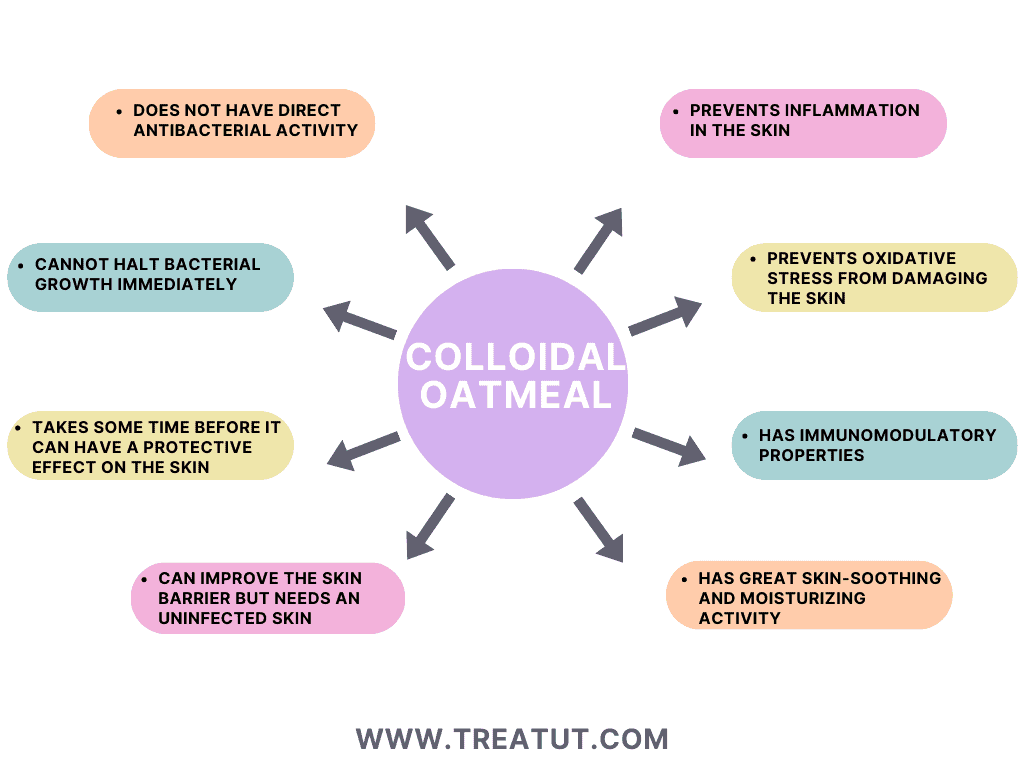
What are the constituents of oatmeal and how do they help in preventing UTI?
Oatmeal has a class of compounds called polyphenolic compounds. The most famous of which is the avenanthramides group of compounds which is exclusive only to the oatmeal grain.
This group of compounds and the other polyphenolic compounds found in oatmeal contribute to its antioxidant and anti-inflammatory properties.
In fact, these compounds especially the avenanthramide compounds are very strong antioxidants and anti-inflammatory compounds, and they are one of the reasons why oatmeal baths and preparations are highly Recommended by dermatologists and other professionals as skincare products.
They are also one of the reasons why I said that oatmeal baths can help healthy people prevent UTIs and stay clear of UTI. See this study.
Oatmeal is rich in starch and fiber and the most abundant kind of fiber found in oatmeal is the Beta glucan fiber, and as we said these two kinds of compounds are responsible for the rehydrating and nourishing properties of oatmeal baths.
Another kind of compounds found in oatmeal is the saponin compounds, and these compounds are responsible for the kind of cleansing activity of oatmeal that resembles that of soap.
Oatmeal baths have a skin microbiome-improving effect that can help in preventing UTIs
The Beta-glucan fiber of oatmeal does not only have moisturizing capabilities but they can also improve the skin microbiome population of beneficial kinds of bacteria through having a prebiotic-like action.
This means that beneficial bacteria found on the skin can feed on the nutrients that oatmeal provides, the most important of which is the beta-glucan fiber.
This in turn can enhance the metabolism, function and lactic acid production of these kinds of bacteria, and that increase in lactic acid production would raise the acidity of the skin, repelling pathogenic bacteria in the process. See this study.
Note: the skin is naturally acidic, and dermatological skin conditions like eczema or atopic dermatitis can raise the pH of the skin (decrease acidity) above its normal acidic range, which is between 4-6 pH.
Only commensal (beneficial) bacteria have the ability to feed on oat Beta glucans, while pathogenic bacteria like the E. coli bacteria lack that ability, which is a great advantage of colloidal oatmeal baths and their Beta glucan constituent.
You can see studies on bacterial feeding habits to provide you with a better illustration on this subject.
In that way, oat Beta glucan contributes to the overall protective, pH buffering and immune-modulating effects of oatmeal against infections like UTI and other dermatological issues.
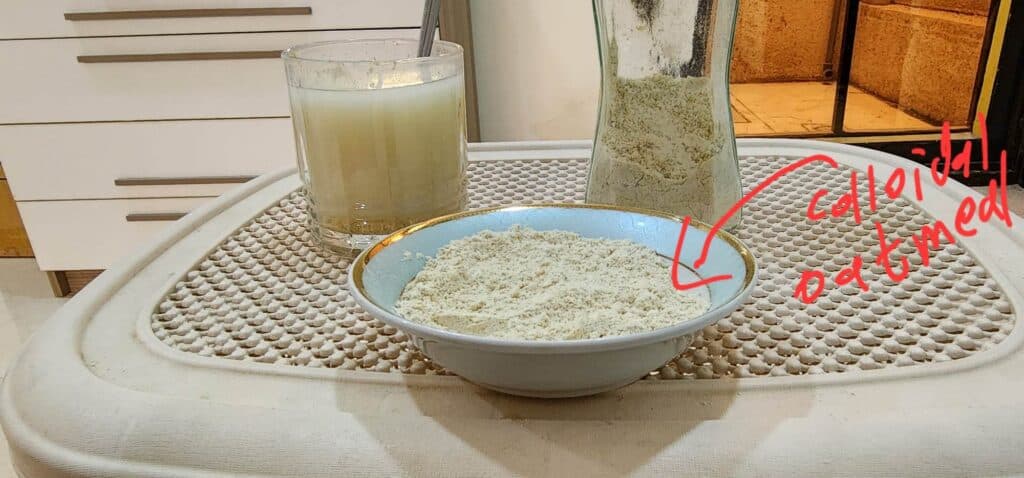
Other oatmeal bath constituents
Oatmeal also contains other kinds of constituents that can have important beneficial effects When taken through the oral route or when applied on the skin by soaking in an oatmeal bath.
Constituents like B vitamins, vitamin E, manganese, iron, magnesium, phosphorus and zinc or all helpful for improving the Skin’s integrity and immunity against Pathological organisms.
By the way, if you want to know about the effects of eating oatmeal on people who suffer from UTI, we have an article about that on our website. Just type oatmeal in the search bar and you’ll find it.
What are the downsides of using oatmeal baths for UTI?
We said before that oatmeal baths are not going to work when there is an active or ongoing UTI, but are they going to cause an actual UTI or worsen one? The answer is no.
The only way I can think of in which oatmeal baths can do harm for UTI patients is when they waste time on an oatmeal bath home remedy and neglect getting treatment by a professional doctor.
Oatmeal baths have soothing, anti-inflammatory and anti-irritation properties, and these properties can delude people into thinking that their UTI is gone, While in fact, the root cause of the problem is still there, which is the bacteria.
So, during the time people spend on such a “home remedy” the bacteria would have spread even more, possibly to other parts of the urinary tract like the kidneys or even to other organs.
That’s why people should be careful not to place too much high hopes on such a remedy that can only be a part of a UTI prevention plan for healthy people who want to prevent UTIs and not even the whole plan.
Is soaking in a bath good for UTI?
If used in the right way baths can be helpful and useful for UTI, while if used in the wrong way and if we put some harmful ingredients in them, baths can turn awful and produce some unwanted side effects.
For example, if the water used in the bath was not clean, it could contaminate the genital area, increase irritation and exacerbate UTI.
While on the other hand, if the water used in the bath was clean, then the possibility of that happening would be much less.
A kind of bath that has a lot of irritating constituents, bubble baths and bath bombs for example, can increase irritation and inflammation around the genital area and reduce the immunity of that area against infections like UTI.
Contrary to that, a fruit vinegar bath, with its strong antibacterial properties, is considered a beneficial addition to both UTI treatment and prevention plans, as long as the person using it does not have allergies to it.
In whatever kind of bath remedy we want to use for our UTI, we must make sure that first it contains constituents that has antibacterial qualities and if possible some anti-inflammatory, soothing and antioxidant properties.
We also want to avoid baths that are irritating and contain a lot of chemicals and irritating substances that can cause damage to our skin, especially the skin around the genital area.
See our Baths for UTI article for more information.
How to use oatmeal baths in the best way for UTI?
You should use oatmeal baths only when you are healthy and want to prevent any future UTIs. This is the best and most helpful way in which you can use oatmeal baths for UTI.
As to how to use them assuming that the water is clean, oatmeal baths can be considered as rather none contaminating and people can soak and them for as long as 20 to 30 minutes and maybe even more than that, but 30 minutes is the safest established limit.
You can either choose an oatmeal bath product from the supermarket or you can prepare colloidal oatmeal at your home and use it in your bath.
If you want to make an oatmeal bath at home prepare colloidal oatmeal through grinding whole oats using a processor or blender. The grinding process should last until the oats are turned into a fine powder.
A tablespoon of those blended oats should dissolve quickly in a cup of water turning it into a milky-looking solution. In this way, you can know that you have blended the whole oats to the right degree.
Then you can use about a whole cup of those blended oats which are called colloidal oatmeal in your bath. Put some of it under the running water and then sprinkle the rest of it in the bath water.
Mix with your hand and then soak for about 20 to 30 minutes.
If you want to use an oatmeal bath product, you can follow as the directions say for that product, and only soak in the bath for about 15-20 minutes and no more because the bath will most likely contain substances other than colloidal oatmeal.
In any case, after the bath, wash your body and the genital area thoroughly with water so as to prevent any possible irritation or contamination, although the probability of that happening with oatmeal baths is very low.
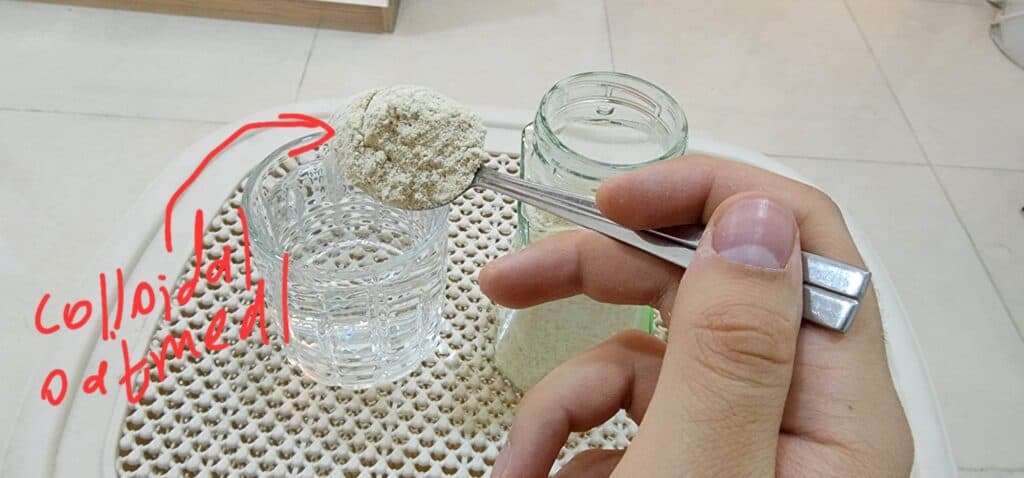
What is the best oatmeal bath product for UTI?
Aveeno Baby Eczema Therapy Soothing Bath Treatment is Kind of the best oatmeal bath product available in the market right now because it does not contain irritating, unwanted or unnecessary additional substances that can interfere with the action of the colloidal oatmeal content of the bath.
Although this bath has been FDA approved for the adjunct treatment of Eczema in babies and adults, it can be used for the purpose of helping with UTI prevention because it contains 43% pure colloidal oatmeal, which is a great advantage for this bath over its competitors that do not have as much a high concentration of colloidal oatmeal.
Oatmeal bath for yeast infection?
Yeast infections and UTIs are sometimes inseparable.
The same rule with UTIs applies here also with yeast infections as there are no data to support the idea of oatmeal baths helping in any kind of way in the treatment of an immediate yeast infection.
While, on the other hand, there is great evidence to support the use of oatmeal baths as a preventative therapy for such conditions.
In summary
If people who want to prevent UTI can use oatmeal baths on a constant basis, they can greatly benefit from the accumulated effect of their skin being exposed to the high number of healthy substances found in that bath.
